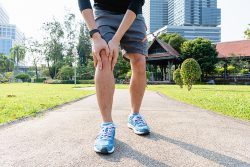Danger of Nanoparticles in Air Pollution

Automobiles and many other sources of air pollution produce nanoparticles. The size of these particles is less than a micron which is one millionth of a meter. Unlike larger particles nanoparticles are so small that some can pass through your lungs into your bloodstream. New findings have found that they build up in diseased areas in our arteries. That may explain why air pollution increases the risk of strokes and heart disease. They also suggest that current efforts and laws to regulate air pollution might be focusing too much on the larger particles which are less dangerous.
Many studies have shown that air pollution results in millions of premature deaths globally each year. The World Health Organization estimates outdoor air pollution in both rural areas and cities caused 3 million deaths worldwide in 2012. Even in European countries where the air is relatively clean, air pollution is to blame for 400,000 premature deaths every year.
Most of these deaths are due to the increased risk of cardiovascular disease. Just being exposed to high air pollution for even short periods can trigger strokes and heart attacks. Long term exposure to air pollution causes vascular damage and the question is why?
It has been suspected that nanoparticles in the air we breathe enter the bloodstream and are then carried to various parts of the body including the heart, blood vessels and arteries. These nanoparticles are made up of mostly carbon compounds so finding them inside carbon based lifeforms like humans is particularly difficult.
The research team at the University of Edinburgh, UK, had volunteers breathe air contained with harmless gold nanoparticles. After 15 minutes these nanoparticles began to show up in the volunteer’s blood and they could still be found in their urine and blood three months later. While the gold nanoparticles are inert, reactive compounds found in air pollution can have a variety of harmful effects.
The team also analyzed surgically removed plaques from people who were at a high risk of stroke. They discovered that the nanoparticles tended to accumulate in fatty plaques which grow inside blood vessels and lead to strokes and heart attacks.
Air quality laws in various parts of the world set limits on particulate matter smaller than 2.5 micrometers which is called PM2.5. This limit is on the total mass of the particles in a cubic meter of air rather than the total number.
Thousands of ultra fine particles can weight much less in total than a few relatively large ones. PM2.5 per cubic meter has fallen in most wealthy countries over the past decade which suggests air quality is improving. However, due to the increased numbers of diesel vehicles, the number of ultra fine particles has risen.
The problem is that measuring the number of ultra fine particles is extremely difficult and cannot be accomplished using roadside devices which are widely used to monitor air pollution.
Further studies by the UK team will focus on whether gold nanoparticles can enter the brain. Air pollution does seem to increase the risk of brain disorders such as Alzheimer’s, Parkinson’s and dementia. A recent study discovered tiny iron particles in the people’s brains which may have come from vehicle exhaust.
What can you do about nanoparticles in the air in your home? One possiblity is to purchase a high end air purifier such as the Air IQ. It can remove particles down to 3 nanometers in size which is 100 times smaller than other air purifiers. The purifier is expensive both to purchase and maintain, however it goes far beyond other solutions. Life Code is not associated with the Air IQ company or sales of the product.
To view the original scientific study click below
Inhaled Nanoparticles Accumulate at Sites of Vascular Disease.



 If you are stressed to the max you will be glad to know that researchers have discovered the type of sleep that is most apt to not only calm but also reset the anxious brain. It is deep sleep known as non rapid eye movement or NREM. This slow wave sleep allows neural oscillations to become highly synchronized which lead to drops in heart rates and blood pressure.
If you are stressed to the max you will be glad to know that researchers have discovered the type of sleep that is most apt to not only calm but also reset the anxious brain. It is deep sleep known as non rapid eye movement or NREM. This slow wave sleep allows neural oscillations to become highly synchronized which lead to drops in heart rates and blood pressure. Hyper-palatable foods are those made with a mix of ingredients that light up people’s brain-reward neural circuitry and overpower mechanisms that are supposed to signal when we’ve had enough to eat. Because these foods essentially enhance their consumption, overweight and obesity can be the result.
Hyper-palatable foods are those made with a mix of ingredients that light up people’s brain-reward neural circuitry and overpower mechanisms that are supposed to signal when we’ve had enough to eat. Because these foods essentially enhance their consumption, overweight and obesity can be the result. Although blue light may not be shining in someones eyes, it can still affect a person’s longevity. A new study has suggested that the blue wavelengths which are produced by light emitting diodes from phones, household fixtures and computers damage cells in the brain and in the retinas.
Although blue light may not be shining in someones eyes, it can still affect a person’s longevity. A new study has suggested that the blue wavelengths which are produced by light emitting diodes from phones, household fixtures and computers damage cells in the brain and in the retinas. A novel multi pronged approach for concurrently rejuvenating both the vasculature and cardiac muscle of the heart has been recently developed. The results give hope to developing a new treatment for repairing hearts that have been damaged by myocardial infarction. This new therapy could serve as an alternative to heart transplants
A novel multi pronged approach for concurrently rejuvenating both the vasculature and cardiac muscle of the heart has been recently developed. The results give hope to developing a new treatment for repairing hearts that have been damaged by myocardial infarction. This new therapy could serve as an alternative to heart transplants Through experiments using mice, researchers have developed a method to successfully transplant a particular kind of protective brain cells without the use for life long anti-rejection drugs. The team at Johns Hopkins Medicine, have selectively circumvented the immune response against foreign cells which allows for transplanted cells to survive and even thrive and protect brain tissue after immune suppressing drugs have been discontinued.
Through experiments using mice, researchers have developed a method to successfully transplant a particular kind of protective brain cells without the use for life long anti-rejection drugs. The team at Johns Hopkins Medicine, have selectively circumvented the immune response against foreign cells which allows for transplanted cells to survive and even thrive and protect brain tissue after immune suppressing drugs have been discontinued. A new study has found that just be changing when you eat and exercise, you can have achieve better control of blood sugar levels. The study by health scientists at the Universities of Birmingham and Bath, shows that exercising before breakfast burns more fat which improves the body’s response to insulin and can lower people’s risk of cardiovascular disease and type 2 diabetes.
A new study has found that just be changing when you eat and exercise, you can have achieve better control of blood sugar levels. The study by health scientists at the Universities of Birmingham and Bath, shows that exercising before breakfast burns more fat which improves the body’s response to insulin and can lower people’s risk of cardiovascular disease and type 2 diabetes. While many people are doing their part in reducing plastic use, there are some tea manufacturers who are actually moving in the opposite direction. Some tea producers are replacing the traditional paper teabags with plastic teabags. A new study has found that those plastic teabags may come with a bit of micro and nano sized plastics which are shed from the bag. What is unknown at this time, is what possible effects on health could come from ingesting these particles
While many people are doing their part in reducing plastic use, there are some tea manufacturers who are actually moving in the opposite direction. Some tea producers are replacing the traditional paper teabags with plastic teabags. A new study has found that those plastic teabags may come with a bit of micro and nano sized plastics which are shed from the bag. What is unknown at this time, is what possible effects on health could come from ingesting these particles A new study has shown that naps are associated with a lower risk of heart disease. Occasional napping can cut a person’s risk of strokes, heart disease and heart attack by half when compared to those who don’t nap.
A new study has shown that naps are associated with a lower risk of heart disease. Occasional napping can cut a person’s risk of strokes, heart disease and heart attack by half when compared to those who don’t nap. Researchers have discovered, contrary to popular belief, that human joint cartilage can repair itself. It does it in a manner similar to that used by creatures such as zebrafish and salamanders. This finding could potentially lead to treatments for osteoarthritis which is the most common disorder of joints in the world.
Researchers have discovered, contrary to popular belief, that human joint cartilage can repair itself. It does it in a manner similar to that used by creatures such as zebrafish and salamanders. This finding could potentially lead to treatments for osteoarthritis which is the most common disorder of joints in the world.